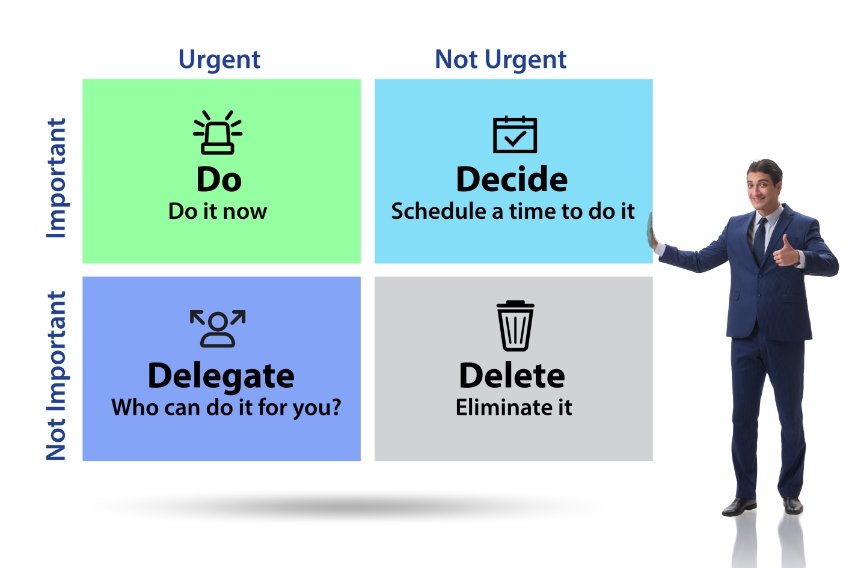Team Collaboration: Definition, Importance & Benefits

Team collaboration is a misunderstood concept. Many business owners and workers believe that being part of a team implies collaboration. In reality, team collaboration refers to a specific harmony that people must achieve when working toward shared goals.
Team collaboration is the secret to success for many businesses. Others have difficulty fostering it. But team collaboration isn’t as elusive as some people believe. It helps to earn the concept and take the appropriate steps to cultivate it in the workplace. Once it’s a part of the company culture, it can yield excellent results.
Table of Contents
Why Is Team Collaboration Important?
Elements of Quality Team Collaboration
Benefits of Team Collaboration
Tips for Building Team Collaboration
What Is Team Collaboration?
Team collaboration is all about reaching a common goal. It sees groups of people exchanging ideas and complementing each others’ skill sets. Collaboration focuses on shifting individual workflows to team workflows. That boosts productivity and helps employees gain a greater sense of purpose.
Through collaboration, brainstorming and problem-solving should come easier. It also helps bring people of various backgrounds and perspectives together. That can offer a significant advantage to teams tasked with creating innovative solutions.

Why Is Team Collaboration Important?
A joint effort from teams can benefit everyone, from small businesses to large organisations. Each team member has different skills, expertise, and individual talents. When individual efforts are combined, the results are extraordinary.
It can take various people working together to reach a common goal. The more people with complementary skills work together, the faster companies can deliver projects on time. And the easier it is to improve business relationships.
Getting teams accustomed to using online collaboration tools and in-office resources is essential. Modern workplaces are more hybrid than ever, and better team collaboration is vital. Team members must learn to work together. That’s regardless of whether they share the same physical space using the right communication channels.
Elements of Quality Team Collaboration
Teamwork can be one of the easiest company cultures to create when you focus on the correct elements. These include:
Communication
Effective communication is vital for any collaborative team. You want people to talk often, share knowledge, and ask questions.
But getting it right requires a good balancing act between speaking and listening. The latter behaviour shows respect. It allows enough time for people to absorb knowledge and understand various problems.
Coordination
Everyone in a group effort needs to play to their strengths to reach a team’s goals. But that’s not easy to do without someone at the helm.
A team leader or project manager must understand how to coordinate people across several departments. They must identify unique skills and expertise when helping employees collaborate.
Transparency
Transparency is an interesting concept in the workplace. You can associate it with many things. But when it comes to team collaboration, transparency often refers to involvement from top leadership and management positions.
Teams need to understand the goals that allow the company to succeed. They also need to know how that success translates to a positive experience for them.
Higher-ups must lead by example and make their involvement clear. It’s a more efficient way to teach and encourage collaboration.
Accountability
Team performance can improve when team members get rewarded for their efforts. Team-based rewards should be a core part of the collaboration culture. But that doesn’t mean that benefits and recognition are the only incentives. Collaboration should emphasise accountability.
In this case, individual bonuses become tied to the team’s success. If one member lags behind, the others can help get them back up to speed. This creates the perfect opportunity for employees to have each other’s backs.
Trust
There are two types of trust that matter in a collaborative effort. First, employees must learn to trust each other to solve problems and deliver quality solutions. Second, they must be able to trust management to keep their best interests in mind. Good coordination and transparency can build the necessary trust for everyone to perform at the highest level.
Benefits of Team Collaboration
There are several benefits to team collaboration within a company. The core elements include:
Building a Strong Foundation
Every business must deliver on multiple fronts to be successful. Companies deliver services and products. Employees deliver ideas and resources and these can turn into solutions.
But no organisation can do everything without collaborative teams. It won’t work if everyone is focusing entirely on a niche role in the company. Collaborative teams centralise these processes and streamline productivity across various departments.
Modern team collaboration tools make team communication easier. This is especially true when adopting the use of more technology in the workplace.
Enhances Focus on Key Responsibilities
What makes putting in a team effort worthwhile? It helps individual team members stay aligned with their responsibilities. And it helps them work towards the same team goal.
Imagine working in an isolated environment. And imagine getting periodic assessments from a project manager in a different department. Wouldn’t be as ideal, right?
Waiting for those online meetings isn’t optimal. It leaves plenty of room to make mistakes. But working in tandem lets employees check on each other often. This way, they stay on the right track.
Drives Growth and Innovation
Even employees working in the same department can be very different. They can bring various skills and knowledge to the table. But while cross-team collaboration helps bridge knowledge gaps, it also fosters individual growth.
A collaborative working environment sets the stage for employees to develop new skills. Think of it as an ongoing learning experience. Brainstorming sessions, active collaboration, and group discussions are ideal for knowledge sharing. Other team members can pick up new skills, polish existing ones, and enable teams to work more efficiently as a result.
Equal participation in projects and problem-solving team meetings can form mutual respect. It can also foster more employee engagement. No one wants to experience stagnation in the workplace.
That’s why a collaborative approach is best for people at all organisational levels. Companies should have honest communication and the right collaboration software. Mutual understanding and personal growth help people shine in their roles.
The better they become, the happier and more creative they get. And these days, companies need to come up with better ideas and innovative solutions. They need to build sustainable global teams ready for anything.
Improves Retention Rates
Both small businesses and massive enterprises struggle to retain employees.
And it doesn’t matter who leaves the company. Losing a stellar, productive employee is as bad as losing a recruit. Grade-A employees leaving leads to drops in productivity and workflow disruption. New employees leaving for other firms leads to wasted time and money.
No matter how you look at things, losing employees is detrimental. But this is where a collaborative culture is essential. It encourages open communication using all available channels. Everyone helps everyone.
Experienced employees can help new ones acclimate and learn new skills. New employees can offer fresh perspectives and new ideas that seasoned company people can execute. It’s a win-win for everyone involved.
Tips for Building Team Collaboration
There are other tips you can use to build team collaboration in the workplace. These are complementary to the 5 core elements. They include:
Celebrate Team Member Diversity
Many remote teams are multicultural teams. That makes cultivating diversity a high priority. Learning to embrace different backgrounds, beliefs, and ideas reduces discrimination. It makes it easier for employees to trust each other. Teams collaborate easier when they can share ideas freely.
Foster Emotional Intelligence Skills
People have different coping mechanisms for stress and work/personal problems. But everyone needs support once in a while.
It’s important to show genuine interest in other people’s moods and struggles. Doing so will earn their trust. It makes people open up and eventually get the help they need.
Training employees to recognise verbal and non-verbal cues can be a great exercise.
Introduce Online Collaboration Tools
Effective team collaboration requires good project management skills. Online collaboration tools are especially helpful.
Updating your software and using efficient cloud-based document management systems streamlines the workflow.
It takes more than people being on the same page to complete the company’s mission. You want the entire team to have the right tools. This way, they can enjoy proper communication between themselves and any external partners or clients.

Key Takeaways
Team collaboration can help develop average employees into competent ones. They will learn to communicate effectively and work together and in this process, your company can and will skyrocket in productivity and efficiency.
Setting the tone for proper collaboration always starts at the top. Emphasise transparency as much as possible. Build trust with your employees. Explain the benefits of team collaboration whenever the opportunity arises.
Start adopting this winning culture within your company immediately and find the right team collaboration software, as it will go a long way in improving that culture.
FAQs on Team Collaboration
What is an example of team collaboration?
A great example of good team collaboration is the process of building a website. Project managers can assign the best individuals to complete the job, explain guidelines, and set the budget. Developers and designers can work together to overcome technical issues and achieve a creative design. A QA engineer can follow the progress, analyse the work, and hold everyone accountable or point out mistakes.
How do you improve team collaboration?
The best way to improve team collaboration is to make it the focal point of the company’s culture. Repetition and consistency also lead to productive collaboration.
How do you develop collaboration skills?
Anyone can develop collaboration skills. The key is to improve them through active participation in work projects and team-building exercises.
RELATED ARTICLES

 Time Management Matrix: Definition, Importance & Benefits
Time Management Matrix: Definition, Importance & Benefits Materiality Concept in Accounting: Definition, Importance & Example
Materiality Concept in Accounting: Definition, Importance & Example Top-Down Estimating: Definition, Methods, Pros & Cons
Top-Down Estimating: Definition, Methods, Pros & Cons What is Fixed Expense & Variable Expense?
What is Fixed Expense & Variable Expense?